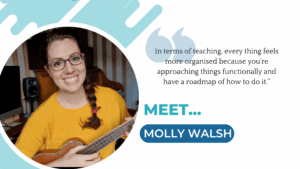Listen to Beyonce, Whitney Houston or Freddie Mercury, and you’ll hear vibrato, that quick fluttery quality around a note that adds richness and emotion to a vocal.
So what’s really going on when a singer produces vibrato? And what does it tell us about a singer? To find out BAST Training spoke to John Nix, Professor of Voice and Voice Pedagogy and Chair of Voice at the University of Texas.
On the Singing Teachers Talk podcast, John goes on a deep dive into the mechanics and virtues of vibrato. Here’s a taste of what he had to say.
What is vibrato?
It’s a periodic oscillation of fundamental frequency, which we perceive as pitch. It’s also an oscillation of amplitude affecting apparent intensity or volume. Then you also have oscillation of timbre because harmonics are sweeping through where those vowel resonances are.
What qualities can It bring to a vocal performance?
Vibrato is one of the ways in which heightened emotion imprints itself upon our voice; there’s a tremulousness to it. Think of the famous Martin Luther King I Have a Dream speech. It’s a very emotive speech and sometimes you will hear that oscillation in amplitude and frequency. There are aspects of vibrato that are very much tied to emotion.
What does It tell us about a singer?
When I am working with students and I hear the vibrato becoming more regular and stable – and that the extent is not too wide, and that the rate is not too slow or fast – that tells me that their system is coming into better balance. The amount of breath pressure that they’re using, the airflow while they sing, the shaping of their vocal tract, all of that is starting to sync up in a better way when the vibrato draws attention to itself.
What Do the terms rate, extent and jitter mean?
Rate
This refers to how many times per second the frequency cycles up and down. We talk about it in relation to average pitch. One complete cycle is when it swings up, down, and comes back up to that midpoint. The number of cycles in one second is the vibrato rate. If a rate is five hertz, that would be five cycles a second.
Extent
When we talk about extent, we’re referring to how far the frequency is swinging above and below average pitch and it’s measured in cents. There are 100 cents in a semitone – a half step.
Jitter
Jitter relates to the regularity of the period of each vibrato cycle. In other words, the amount of time it takes to go through one vibrato cycle – that up, down and back – is the jitter. It’s expressed as a percentage and is basically a measure of the consistency of the rate of the vibrato.
What’s Ideal?
Typically, in Western classical singing the desired rate is between five and six hertz; generally, that is the sweet spot. An extent of about plus or minus 50 cents, so about a quarter tone above and below and a jitter of about three per cent.
Can or should a vocal coach teach a singer to use vibrato?
I’m very much of the view that if things are free and the vibrato emerges, great. But I’m not in the business of trying to make it happen. I think that as a young singer’s voice frees up and matures, it might start appearing. Vibrato is a real bellwether that vocal production is easier.
Learn more
Listen to the full interview on the Singing Teachers Talk podcast, where John explains:
– The difference between the two types of vibrato.
– How the positioning of the tongue and shape of the mouth can impact vibrato.




